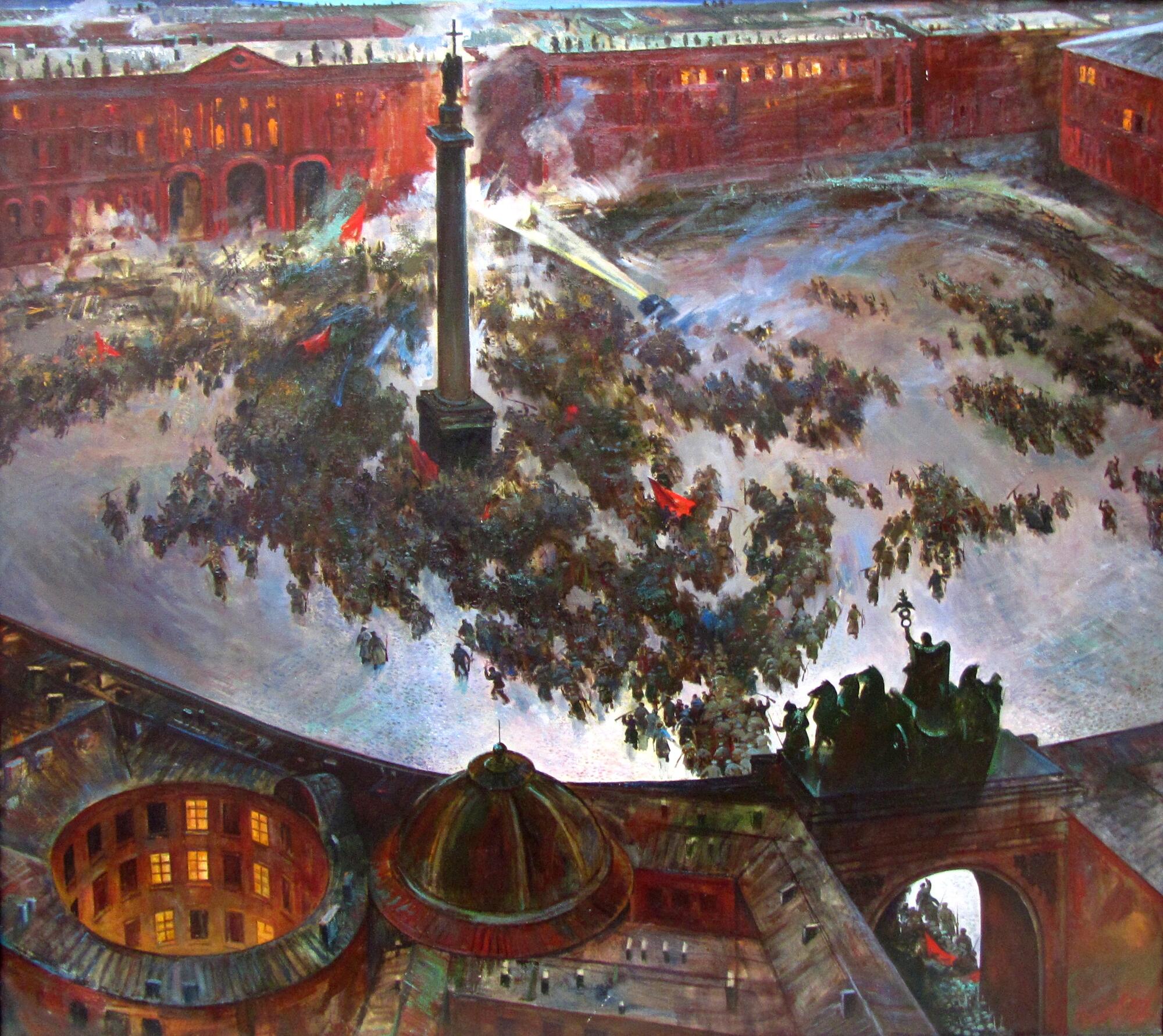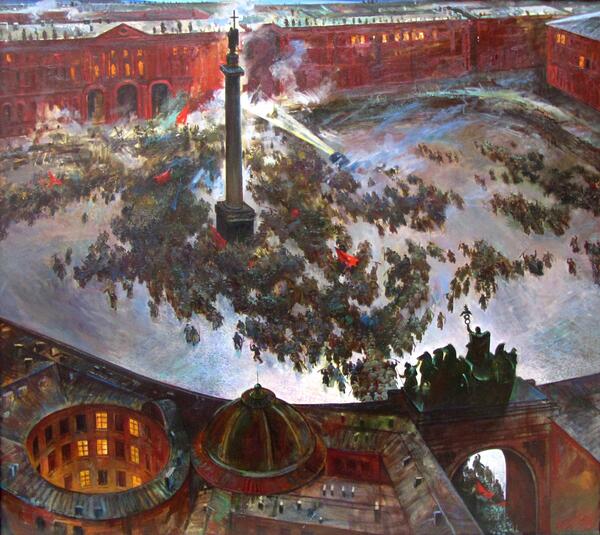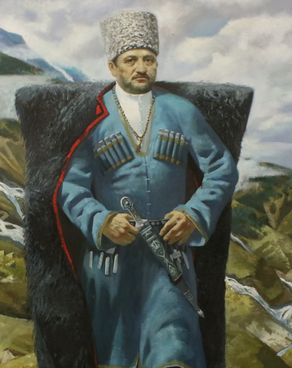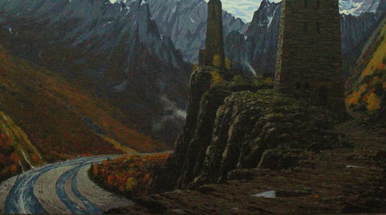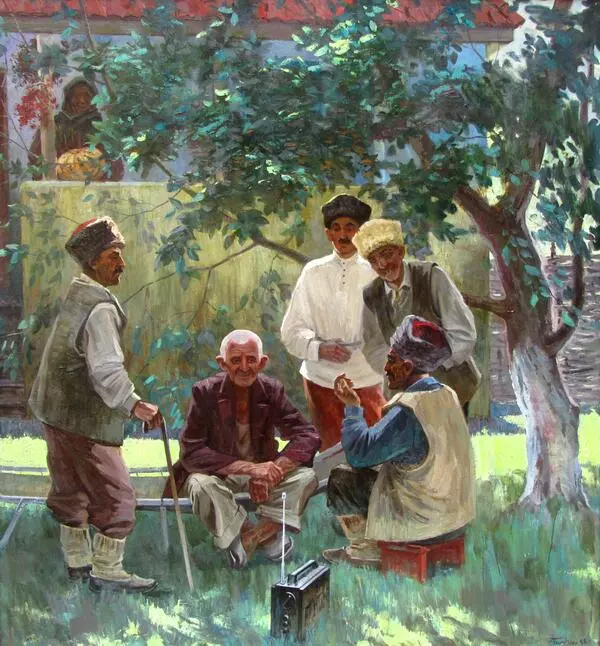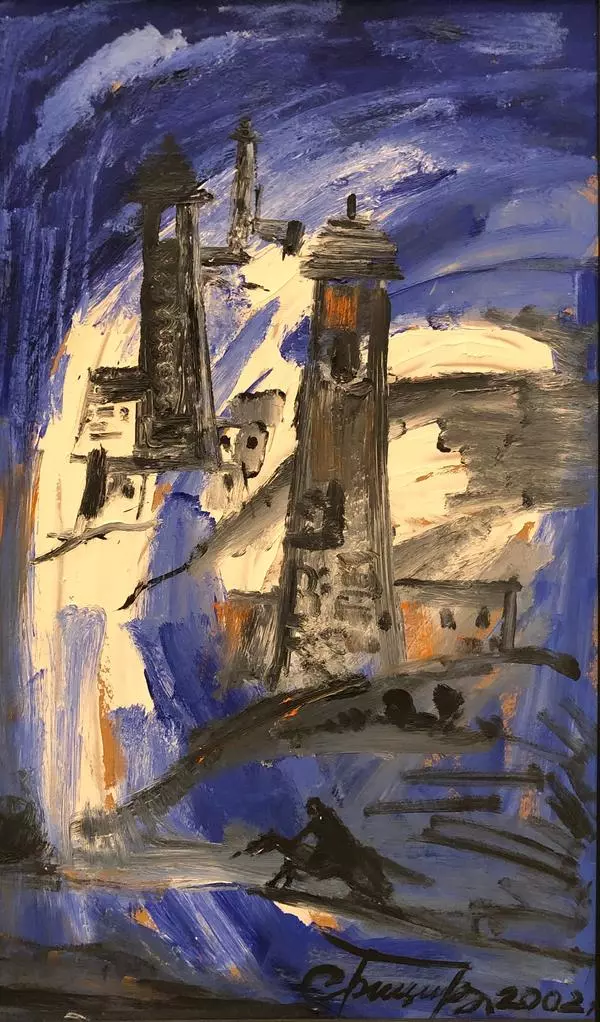The painting by Chechen artist Said Bitsiraev depicts one of the key events of the October Revolution of 1917 — the assault of the Winter Palace. It occurred on the night of November 7 to 8.
At that time, the Winter Palace housed the residence of the Provisional Government: it had ruled Russia since February 1917, after Emperor Nicholas II abdicated.
On the morning of November 7, small detachments of Bolsheviks began to occupy important city facilities: a telephone exchange, train stations, a bank, a power plant, and food warehouses. They met almost no resistance, the events unfolded peacefully. Members of the Provisional Government — except for Alexander Kerensky who fled the city — did not leave the Winter Palace. The building was guarded by cadets from military schools, later they were joined by a women’s battalion, Cossacks with machine guns and volunteers. It was expected that troops from the front would come to the rescue, and the defenders of the Winter Palace would be able to hold out until that time. But by the end of the day, there were noticeably fewer of them: someone left without waiting for any action from the Bolsheviks, some of the cadets were recalled by the heads of military schools. Artillery pieces and armored cars were also removed from the Palace Square: there was not enough gasoline.
The Winter assault began around nine o’clock in the evening: it is believed that a single blank shot from the legendary cruiser Aurora served as a signal for it. The first attack lasted about an hour, the palace was shelled with rifles and machine guns. Later, at about 11 pm, artillery guns of the Peter and Paul Fortress joined the shooting, but their shells only slightly touched the palace walls. At two o’clock in the morning, workers and sailors managed to get inside the Winter Palace. Members of the Provisional Government were arrested on the spot.
The painting by Said Bitsiraev is a view of the Palace Square from above. A crowd of people rushes to it through the central arch, splitting into two parts at the Alexander Column. There are red banners in the crowd — symbols of the revolution and the communist movement, later they became the basis for the state flag of the USSR.
At that time, the Winter Palace housed the residence of the Provisional Government: it had ruled Russia since February 1917, after Emperor Nicholas II abdicated.
On the morning of November 7, small detachments of Bolsheviks began to occupy important city facilities: a telephone exchange, train stations, a bank, a power plant, and food warehouses. They met almost no resistance, the events unfolded peacefully. Members of the Provisional Government — except for Alexander Kerensky who fled the city — did not leave the Winter Palace. The building was guarded by cadets from military schools, later they were joined by a women’s battalion, Cossacks with machine guns and volunteers. It was expected that troops from the front would come to the rescue, and the defenders of the Winter Palace would be able to hold out until that time. But by the end of the day, there were noticeably fewer of them: someone left without waiting for any action from the Bolsheviks, some of the cadets were recalled by the heads of military schools. Artillery pieces and armored cars were also removed from the Palace Square: there was not enough gasoline.
The Winter assault began around nine o’clock in the evening: it is believed that a single blank shot from the legendary cruiser Aurora served as a signal for it. The first attack lasted about an hour, the palace was shelled with rifles and machine guns. Later, at about 11 pm, artillery guns of the Peter and Paul Fortress joined the shooting, but their shells only slightly touched the palace walls. At two o’clock in the morning, workers and sailors managed to get inside the Winter Palace. Members of the Provisional Government were arrested on the spot.
The painting by Said Bitsiraev is a view of the Palace Square from above. A crowd of people rushes to it through the central arch, splitting into two parts at the Alexander Column. There are red banners in the crowd — symbols of the revolution and the communist movement, later they became the basis for the state flag of the USSR.
